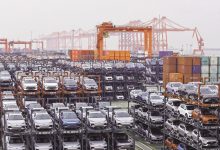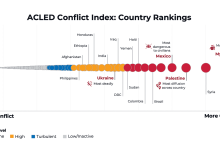Kaliningrad region: Main directions and priorities of oil and gas complex development
This article presents main steps of oil and gas complex formation in Kaliningrad region. Serious changes in political situation especially in recent years generate new challenges. At the same time, new technologies and research create various opportunities for further development and improvement of oil and gas complex within this area. This review demonstrates different approaches of sustainable development of oil and gas companies in terms of exclave region. The key directions for further growth are gas network expansion so as development of both offshore and shelf oil reserves.
Evolution of oil and gas complex in different areas is determined by many internal and external factors. Most internal factors are connected with such parameters as: geology of the region, presence of hydrocarbon bearing layers, chemical and physical characteristics of oil and gas, logistics and infrastructure. Describing external factors that strongly influence on oil and gas complex, we should mention political situation, economics and legislation. Sometimes logistics can be included into this group of factors due to political issues and geography of the region. Oil and gas complex evolution in Kaliningrad area in comparison with main part of Russia is significantly different. Most of these ventures, equipment and technological schemes were designed and constructed as a part of common oil and gas complex of the Soviet Union. Nowadays Kaliningrad region is separated from the rest of Russia by several countries. However, it has its own oil production, that has been evolving during last 30 years. Those are the reasons why this part of Russia has some processes in local oil and gas complex development that might be interesting to investigate.
History of oil and gas complex of the region
The history of oil and gas complex evolution in Kaliningrad region as well as the region itself are very unique and specific. The first research of oil-bearing capacity of East Prussia depths took place in 1920-1930, when this territory was a part of Germany. During these geological surveys, several geophysical researches together with well-drilling (to the depth of approximately 1.5 km) were done.
However, scientific modes and equipment which were used that time were not sufficient to explore the hydrocarbon deposits. At the same time oil and gas complex of East Prussia was rapidly being formed because of a wide range of economic and political factors. The existence of a port at the Baltic Sea, development of the regional industry and simultaneous proximity to the border demanded the construction of storages for crude oil, diesel fuel and gasoline. This led to construction of the first oil-loading racks (within the port and near main Konigsberg railway stations), and appearance of a number of railway tanks for transportation of hydrocarbons. In addition, it led to construction of the first distribution pipelines, gas tanks, etc. (Figure 1 – see the print edition).
Severe battles in East Prussia during February-April 1945 led to almost complete destruction of the oil and gas infrastructure. When the region was transferred to the Soviet Union, only a small portion of oil and gas equipment, concentrated in the ports of Königsberg and Pillau, survived and could be used in further work. Thus in 1946 the development of the region’s oil and gas industry began virtually from scratch.
The first step was the construction of a tank farm and rail overpasses in the port, so as a wide geological survey for hydrocarbons. As a result, creation of the necessary diesel fuel and ship fuel oil storage tanks within the shortest period of time increased the turnover of the local ports.
The application range of geophysical studies of the subsurface during 1955 – 1958 provided more than 40 prospective areas (Figure 2 – see the print edition). Next stage of exploration – deep drilling – brought first Kaliningrad oil, which was obtained from the well Gusevskaya-2 in 1967. In 1968 oil was obtained from Krasnoborskiy field. However, institutional constraints together with construction of the necessary infrastructure delayed the start of oil production in the region till 1975.
Record production of oil (1.5 million tons per year) was reached in this area in 1983. During 2000 – 2001, oil was being extracted from 18 of 26 explored deposits.
A special point of the development of oil production in Kaliningrad region was discovery and exploration of offshore hydrocarbon reserves. Thus, exploration was conducted under guidance of the Council for Mutual Economic Assistance between Poland, East Germany and the Soviet Union by creation of a joint venture ‘Petrobaltic’ – which has started complex research in the Baltic Sea area since 1970. As a result, a number of geological works and studies were carried out by this joint venture in the waters of Kaliningrad region that identified up to two dozen prospective structures.
Exploration drilling for oil gave inflow of light hydrocarbons from two structures: C-9 and D-6. Research carried out those years were the key to successful development of oil production in Kaliningrad region during the 2000s. Active geological study of the region subsoil were accompanied by measures for rehabilitation and development of other elements of oil and gas industry. During gasification of the Baltic republics in the 1970s, a project for construction of a gas pipeline from the city of Kaunas to Svetlogorsk through Kaliningrad was successfully finished. As a result, it significantly increased the energy resources of the region, which in turn spurred the pace of industrial development, but also allowed to gasify the region.
Development of gas system in Kaliningrad region
Collapse of the Soviet Union has led to significant changes in the structure of oil and gas complex of Kaliningrad Region. The regional government has specified new challenges, which are largely determined by its exclave location.
The most pressing issue is improvement and development of gas transportation infrastructure, construction of additional gas connections to new clients. It should be noted that the existing main gas pipeline for a long time was not providing the necessary volume of natural gas for the region. At the same time occurred borders created additional risks for gas supply from the main part of Russia. As a result, a number of decisions, aimed at reducing this risk and enlarging gas web in this area, were adopted. The first step in this direction was reconstruction of the main gas pipeline Minsk – Vilnius – Kaunas – Kaliningrad and increase of its output to designed capacity of 2.5 billion cubic meters per year. The reconstruction allowed JSC Gazprom to launch an underground gas storage construction near Romanovo settlement (Figure 3 – see the print edition).
Underground gas storage at a depth of about 1 km will adjust the volume of natural gas consumption in the region, compensate lack of gas in winter, and also will be a strategic reserve.
In 2013 the first phase of underground gas storage was put into operation. This first phase included two tanks with a capacity of 460,000 cubic meters with a total operating gas volume of 70 million cubic meters. Currently, a subsidiary of JSC Gazprom – LLC Gazprom Invest – increases the volume of underground gas storage. Recently they have 3 underground tanks under construction. Their commissioning will allow increasing the volume of geometric UGS up to 2 million cubic meters by 2019 with an active volume of injected gas to 261 million cubic meters. In the nearest future company plans to increase the number of tanks to 14. A significant step in development of this project, in addition to creating new gas storages, was the decision to build a LNG regasification terminal that will be a part of the existing gas pipeline system in Kaliningrad underground storage. This will allow pumping gas directly to regional consumers, simultaneously keeping it underground. This terminal is being constructed at the Hyundai Heavy Industries Company in Korea, its supply to Kaliningrad region is scheduled for November 2017. It will be used for storing, transporting natural gas, so as it will be adapted for filling small LNG ships in the further development of Gazprom bunkering at the Baltic Sea.
Creating of such a complex will allow finishing the regional gasification program in short terms. This will lead to free access to natural gas for about 100 thousand inhabitants of the region by 2020. Now JSC Gazprom conducts the construction of several branches of gas pipeline to such cities as Chernyakhovsk, Svetliy, and Baltiysk. In some other cities – Nesterov, Ozersk, as well as in the southern part of the region some gasification operations just have started. The plan is to construct about 50 gasification facilities for 850 km of gas networks. Such development of the gas transportation system will create favourable conditions for development of local industry (canning and wine factories, furniture factories, a ship-repair factory and workshops) and of course will increase competitiveness of agricultural sector. Moreover, realization of this project will allow increasing energy security of the region.
During the last several years, the exploration of oil resources of the region went along with gas infrastructure development.
Prospects of baltic sea offshore deposits development
At the beginning of 2000s the main volumes of hydrocarbons mined at onshore oil fields were exhausted. Watering of wells’ output reached 80-90%. As a result, JSC Lukoil decided to deploy Kaliningrad region offshore oil deposits (Figure 4 – see the print edition).
In 2004, after long-term preparation the offshore ice-resistant platform D-6 started its work at Kravtsovskoye deposit. This event was a start point of offshore oil exploration and production in the region (Figure 5 – see the print edition). During 2013 – 2015 Lukoil has produced additional exploratory drilling in a number of other offshore structures (D-41, D 33, D6 – South) using the jack-up platform Arctic. D-2 structure is currently under exploration. Thanks to geological exploration of the previous years, the volume of confirmed hydrocarbon reserves in these structures amounts 40 million tons.
Construction of 5 fixed platforms is included in plans for development of recently opened offshore fields. In Kaliningrad region, such factories as Cleaver or Shipyard Yantar already have successful experience in construction of such platforms. LLC Lukoil-Kaliningradmorneft treats these enterprises as the main designers and contractors for new offshore platforms. Exploitation of discovered offshore fields together with development of D-6 site will take place during the next 30-35 years.
The existence of oil-gathering station on the shore for oil treatment together with presence of oil terminal essentially simplify oil shipment. However, it should be noted that Lukoil Kaliningradmorneft does not have the licenses for extraction of hydrocarbons within newly opened offshore structures. The license rights granted to the company apply only for exploration and prospecting. The Ministry of Natural Resources should consider the question of granting the permission for discovered offshore fields’ development to the company. As a result, these permits and feasibility studies will become key elements. Next step will be completion of final technical solutions for construction of new platforms so as selection of areas for subsea pipelines.
Such work will require not only the construction and installation of a number of platforms on the shelf, but also creating of additional subsea pipelines. Now Lukoil-Kaliningradmorneft exploits only one subsea oil pipeline connecting the platform D-6 with the gathering station Romanovo (Figure 6 – see the print edition).
Step-by-step commissioning of these fields together with sufficient long-term operation of D-6 structure will significantly support the oil production in Kaliningrad region, which has fallen as a result of onshore wells water flooding.
Prospects of shale oil and gas development
Another perspective direction of oil and gas complex is geological investigation and subsequent usage of shale gas and oil resources in Kaliningrad region. Significant progress in development of similar deposits in USA, as well as currently obtained geological data on shale reserves of oil and gas in various regions of the Russian Federation opens wide perspectives for further work in this direction. It should be noted that Kaliningrad region, along with the surrounding areas – Poland and partially Lithuania, is rather perspective in conducting of such researches and technologies approbation. The existing oil and gas infrastructure of the region in future can switch to exploration of these resources, especially during or after finishing of offshore deposits exploitation. All oil fields discovered in this area are associated with quartz sandstones of the Middle Cambrian. Traps characteristics show that hydrocarbons were mainly secondary accumulated by vertical and lateral migration.
Results of the geological survey indicate that the strata of hydrocarbon source rocks in the region mainly includes Silurian dark gray marl and anhydrite. The thickness of these layers, especially in the western part of the region reaches approximately 60 m. It is comparable with a typical thickness of oil source strata elsewhere. Geological investigations fixed the content of organic material in these layers up to 5.98%.
The amount of fixed organic material and the existence of source strata, an important factor affecting the amount and type of hydrocarbons formation, is geothermal gradient. Higher temperatures in shale formations usually lead to gas genesis, low temperature tend to shale oil genesis (Figure 7 – see the print edition).
Conditions of the western part of the Baltic syncline is characterized by temperatures of 80 – 90°C at depths of 1,500 to 2,000 meters that shows the prospects of shale oil generation. The absence of detailed geological exploration cannot precisely locate hydrocarbon generation zone to the west of the region, as well as to calculate the volume of shale oil. However, according to preliminary estimations made by Russia Petroleum Research Exploration Institute, volumes of shale oil reserves in the Kaliningrad region could reach about 8 – 9 billion tons.
It is vital not to overestimate this potential, because only detailed geological and geophysical investigations could answer the question of recoverability of the mentioned hydrocarbon reserves.
Sustainable development of oil and gas complex will provide a significant increase in industrial capacity, particularly in depressed eastern parts of Kaliningrad region. Presented prospects for development of hydrocarbon deposits together with exploitation of offshore resources imply the effective use of existing infrastructure of Kaliningrad oil and gas complex, as well as testing new, modern approaches for investigation of oil and gas deposits.
About the authors
Pavel Shcherban graduated from the Baltic Federal University of Immanuel Kant, with specialization in technical service in oil and gas complex. In 2013 at the Russian State University of oil and gas I.M. Gubkin he defended thesis ‘Quality Management of subsea pipelines construction in the Baltic sea area’. He is a candidate of technical Sciences (PhD) and works as assistant in the Engineering-technical Institute of Baltic Federal University of Immanuel Kant. He has awarded by medal of professional engineer of the Russian Federation. In 2015 P. Shcherban became an engineer of the year of Russian Federation in the version of oil and gas industry scientific researches. P. Shcherban is an author of 22 scientific and educational publications on quality management in the oil and gas industry, maintenance of oil and gas facilities, diagnostics of pipelines, repair of tank farms and pipelines, environmental, and geological aspects of oil and gas complex of the Kaliningrad region.
Sergey Koryagin graduated from the Kaliningrad technical Institute of fishing industry and economy, with specialization in marine power plant. He is a Doctor of technical Sciences, Professor, honoured worker of higher school of Russian Federation, honorary worker of science and technology of the Russian Federation. At the present time S. Koryagin is a director of the Engineering-technical Institute of Baltic Federal University of Immanuel Kant. He is a member of the Moscow Academy of science and a member of the Academy of Sciences of the city of New York in the direction of Technology and service. He is an author of over 275 scientific and educational publications on fracture mechanics, mechanics of solids and strength of composite materials, as well as on the organization and traffic management, theoretical and applied basics of automated control, hybrid intelligent control systems, vehicles, mechanization and automation of technological processes at the enterprises. He has 13 monographs, 30 patents and patents for inventions.






